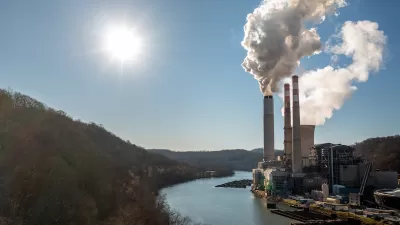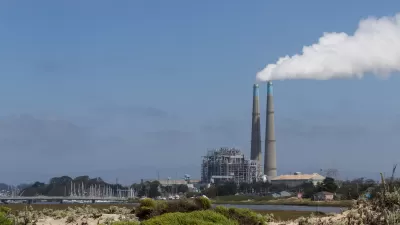Duke Energy hopes to tap $3.4 billion of stimulus funds to build the nation's first clean coal plant, burning the coal in a gaseous form and storing the CO2 emissions. It already has received federal funds to build the $2.35 coal power plant in IN.
Duke Energy "is studying a method for capturing the carbon dioxide produced by using coal and storing the gas underground, preventing it from entering the atmosphere.
The (Edwardsport, IN) plant will differ from conventional coal plants in significant ways, cooking the coal into a fuel gas rather than burning it as a powder, and then thoroughly cleaning the gas and burning it in a jet engine, similar to that used to burn natural gas. Emissions of conventional pollutants, like sulfur, soot and smog-forming nitrogen, will be extremely low.
Two other such "gasification" plants already operate, in Florida and Indiana. Duke's first addition would be to use a machine to strip the carbon dioxide out of the fuel gas.
Until the beginning of last year, the Energy Department had backed a more ambitious effort, the FutureGen gasification plant in Mattoon, Ill., that would have sequestered 90 percent of its carbon dioxide, compared with a maximum of less than 60 percent at Edwardsport.
But in January 2008, the Bush administration decided that the price for FutureGen had grown too high and withdrew financing, proposing instead to finance add-ons like the ones contemplated at Edwardsport."
FULL STORY: Stimulus Money Puts Clean Coal Projects on a Faster Track

Planetizen Federal Action Tracker
A weekly monitor of how Trump’s orders and actions are impacting planners and planning in America.

Congressman Proposes Bill to Rename DC Metro “Trump Train”
The Make Autorail Great Again Act would withhold federal funding to the system until the Washington Metropolitan Area Transit Authority (WMATA), rebrands as the Washington Metropolitan Authority for Greater Access (WMAGA).

The Simple Legislative Tool Transforming Vacant Downtowns
In California, Michigan and Georgia, an easy win is bringing dollars — and delight — back to city centers.

The States Losing Rural Delivery Rooms at an Alarming Pace
In some states, as few as 9% of rural hospitals still deliver babies. As a result, rising pre-term births, no adequate pre-term care and "harrowing" close calls are a growing reality.

The Small South Asian Republic Going all in on EVs
Thanks to one simple policy change less than five years ago, 65% of new cars in this Himalayan country are now electric.

DC Backpedals on Bike Lane Protection, Swaps Barriers for Paint
Citing aesthetic concerns, the city is removing the concrete barriers and flexposts that once separated Arizona Avenue cyclists from motor vehicles.
Urban Design for Planners 1: Software Tools
This six-course series explores essential urban design concepts using open source software and equips planners with the tools they need to participate fully in the urban design process.
Planning for Universal Design
Learn the tools for implementing Universal Design in planning regulations.
Smith Gee Studio
City of Charlotte
City of Camden Redevelopment Agency
City of Astoria
Transportation Research & Education Center (TREC) at Portland State University
US High Speed Rail Association
City of Camden Redevelopment Agency
Municipality of Princeton (NJ)




























